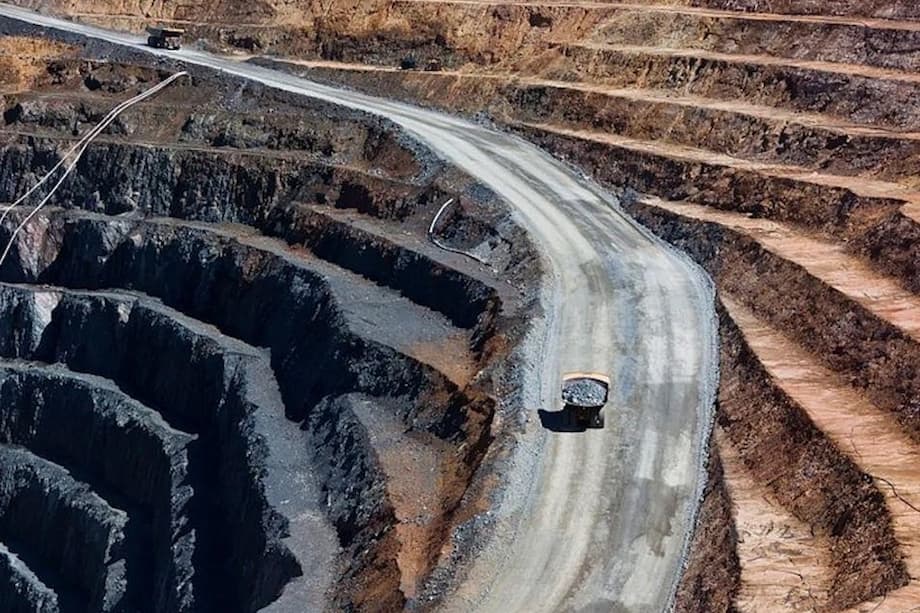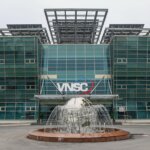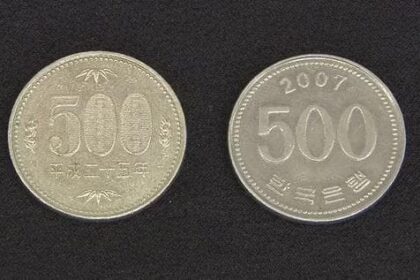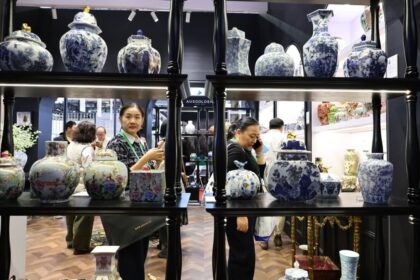China’s Lithium Mining Crackdown: Why 2025 Marks a Turning Point
China, the world’s largest producer and processor of lithium, has entered a new era of regulation and strategic control over its lithium mining sector. In July 2025, sweeping changes to the country’s Mineral Resources Law came into force, fundamentally altering how lithium is classified, mined, and managed. These reforms are not just about environmental protection or market stability—they are about securing China’s dominance in the global battery supply chain and reshaping the future of electric vehicles (EVs), renewable energy, and advanced manufacturing worldwide.
- China’s Lithium Mining Crackdown: Why 2025 Marks a Turning Point
- What Triggered China’s Lithium Regulatory Overhaul?
- How Did Overcapacity and Price Wars Shape Policy?
- Yichun: The Epicenter of Regulatory Crackdown
- Strategic Motives: Securing China’s Battery Supply Chain
- Environmental and Social Impacts: Toward “Green Mines”
- Broader Implications: What’s Next for China and the World?
- In Summary
Once characterized by rapid, sometimes chaotic expansion, China’s lithium industry is now under unprecedented scrutiny. The government’s crackdown on illegal mining, tighter licensing, and new export controls are sending shockwaves through global markets, raising prices and forcing companies and countries to rethink their supply chains. This article explores the motivations behind China’s regulatory overhaul, the immediate and long-term impacts on the lithium market, and what it means for the global race toward electrification.
What Triggered China’s Lithium Regulatory Overhaul?
China’s lithium boom began in earnest in the late 2010s, fueled by the country’s aggressive push into electric vehicles and renewable energy storage. By 2022, China accounted for about 36% of global lithium supply and dominated the processing and refining of lithium chemicals essential for batteries. However, this rapid growth came at a cost: environmental degradation, rampant overcapacity, and a proliferation of unlicensed or non-compliant mining operations, especially in regions like Yichun, Jiangxi—dubbed China’s “lithium capital.”
In early 2023, authorities uncovered widespread unauthorized lithium extraction in Yichun, leading to environmental damage and even transport accidents. Central regulators intervened, shutting down illegal mines and exposing systemic weaknesses in local oversight. This was a wake-up call for Beijing, highlighting the risks of decentralized regulation and the urgent need for a unified, strategic approach to critical minerals.
From Local Autonomy to Centralized Control
Previously, provincial and prefectural governments had significant autonomy to approve mining rights, often leading to inconsistent enforcement and loopholes. The revised Mineral Resources Law, effective July 2025, changed this by:
- Designating lithium as an independent, strategic mineral for the first time
- Centralizing approval authority for mining rights in strategic minerals under the Ministry of Natural Resources
- Setting a minimum lithium oxide (Li₂O) content of 0.4% for deposits to qualify as lithium orebodies
- Mandating reclassification of mines previously registered under other mineral categories
- Strengthening environmental and safety standards, requiring compliance with “green mine” criteria
This centralization aims to eliminate local favoritism, close regulatory gaps, and ensure that only qualified, compliant operators remain in the sector.
How Did Overcapacity and Price Wars Shape Policy?
After lithium prices hit record highs in late 2022, the market experienced a dramatic reversal. By the end of 2023, prices had fallen by nearly 90% as new supply outpaced demand growth, triggering fierce competition and driving many smaller, high-cost mines into the red. In Jiangxi, about 30% of lithium-mica capacity sat idle in the first half of 2025 due to negative margins.
This “race to the bottom” threatened the long-term health of China’s lithium industry. Policymakers responded with a series of supply-side reforms, including:
- Encouraging industry consolidation and cutting excess capacity
- Banning below-cost sales and adding lithium to a price stabilization list
- Coordinating local shutdowns to ease overcapacity
- Promoting “anti-involution” policies—an official term for ending redundant, destructive competition
By mid-2025, the state planner and several ministries were actively using the term “anti-involution” for lithium and batteries, signaling a shift from unchecked expansion to controlled, high-quality growth. The Lithium Branch of the China Nonferrous Metals Industry Association urged the entire supply chain to resist “vicious competition” and focus on healthy development.
Yichun: The Epicenter of Regulatory Crackdown
Yichun, with its rich lepidolite deposits and integrated battery industry, became ground zero for China’s regulatory push. In mid-2025, the Yichun Natural Resources Bureau flagged eight mines for licensing inconsistencies, requiring updated reserve reports and compliance audits. The main issues included:
- Mismatches between licensed mining rights and the minerals actually being extracted
- Boundary violations and inadequate documentation
- Discrepancies in production reporting
These problems reflected the sector’s rapid, sometimes disorderly growth. The crackdown forced operators to rectify permits and submit renewal applications—a process expected to take several months. On August 9, 2025, CATL’s Jianxiawo mine, a major supplier for the battery giant, suspended operations due to permit expiry amid a regional audit. This move sent shockwaves through the market, with lithium carbonate futures on the Guangzhou Futures Exchange surging by 8% in a single day.
Market Reactions and Global Ripples
The immediate impact of regulatory enforcement was a spike in lithium prices and heightened volatility. According to Reuters, futures hit their upper price limit following the CATL mine suspension, while shares of global lithium producers rallied on expectations of tighter supply. Analysts warned that up to 17% of global lithium supply could be at risk if further closures occurred, though large-scale shutdowns remain unlikely in the short term due to strategic considerations.
Strategic Motives: Securing China’s Battery Supply Chain
China’s regulatory overhaul is not just about cleaning up the domestic industry—it is about cementing the country’s leadership in the global battery and EV supply chain. In July 2025, the Ministry of Commerce and Ministry of Technology issued new export restrictions on key battery technologies, including lithium carbonate and hydroxide processing, cathode material preparation, and gallium extraction. These measures:
- Require prior approval for the export of restricted technologies
- Increase compliance costs and timelines for companies involved in joint ventures or technical service agreements
- Signal China’s intent to control the upstream and midstream battery value chain
By raising entry barriers and filtering out speculative or obsolete capacity, China aims to reduce domestic oversupply, stabilize prices, and ensure that only technologically advanced, environmentally compliant operators remain. This approach mirrors earlier supply-side reforms in steel and coal, where the government intervened to address overcapacity and financial risk.
Export Controls and Global Supply Chain Shifts
China’s dominance in lithium and rare earths has made downstream industries—especially automakers and electronics manufacturers—increasingly vulnerable to regulatory and geopolitical risks. Recent export licensing requirements have prompted original equipment manufacturers (OEMs) worldwide to diversify their supply chains, invest in alternative technologies, and seek new sources of critical minerals outside China. However, building new supply chains is costly and time-consuming, and China’s processing capabilities remain unmatched in the near term.
Environmental and Social Impacts: Toward “Green Mines”
Environmental protection is a central pillar of the new regulatory regime. The revised Mineral Resources Law mandates compliance with “green mine” criteria, requiring mining companies to:
- Conduct environmental impact assessments and restoration
- Establish restoration funds and closure plans
- Adopt advanced technologies to minimize ecological damage
Companies face administrative, civil, and criminal liabilities for environmental harm, and non-compliant operations risk suspension or closure. The government’s focus on sustainability is also intended to align China’s mining practices with international standards, enhancing the global credibility of its supply chain.
Social and Economic Trade-Offs
While stricter oversight improves environmental outcomes and industry quality, it also raises costs and slows project development. Smaller, high-cost mines may be forced out, leading to job losses and economic disruption in some regions. Local governments, historically incentivized to boost short-term growth, now face pressure to prioritize long-term competitiveness and environmental stewardship.
Broader Implications: What’s Next for China and the World?
China’s lithium mining reforms are reshaping not only the domestic industry but also the global market for batteries, electric vehicles, and renewable energy storage. Key implications include:
- Market Stabilization: By curbing overcapacity and enforcing higher standards, China aims to prevent boom-and-bust cycles and foster a more stable, transparent market.
- Industry Consolidation: Smaller, non-compliant, or high-cost operators are likely to exit, accelerating consolidation among larger, technologically advanced firms.
- Supply Chain Security: Export controls and centralized licensing strengthen China’s grip on critical minerals, but also push global manufacturers to diversify sourcing and invest in alternative technologies.
- Environmental Leadership: The push for “green mines” and stricter environmental standards may set a new benchmark for responsible mining worldwide.
However, challenges remain. Balancing market intervention with innovation, managing local economic impacts, and navigating geopolitical tensions will test China’s ability to maintain its leadership in the global lithium race.
In Summary
- China’s revised Mineral Resources Law, effective July 2025, designates lithium as a strategic mineral and centralizes regulatory control.
- New rules target illegal mining, overcapacity, and environmental harm, especially in key regions like Yichun.
- Supply-side reforms and “anti-involution” policies aim to end destructive competition and promote high-quality growth.
- Export restrictions on lithium-related technologies reinforce China’s dominance in the battery supply chain but prompt global supply chain diversification.
- Environmental and safety standards are now stricter, with a focus on “green mine” compliance.
- The reforms are expected to stabilize the market, accelerate industry consolidation, and set new standards for responsible mining.
- Global manufacturers face higher regulatory risks and are seeking alternative sources, but China’s processing capabilities remain critical in the near term.












